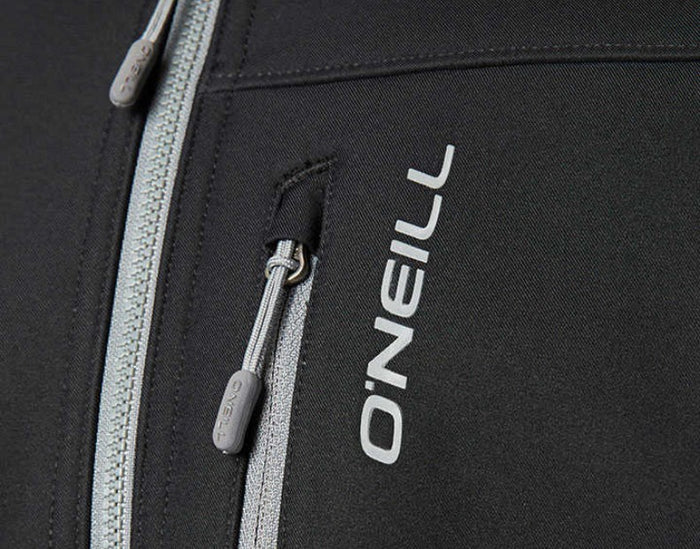Everything you need to know about softshell


Softshell is a construction woven with synthetic materials such as polyester, nylon, and elastane. The innovative structure and balanced composition make the fabric ideal for various outdoor activities. Softshell fabric often has an advanced three-layer construction. The outer layer is typically water-repellent, the middle layer acts as a waterproof and breathable membrane, and the inner layer provides comfort and insulation. This three-layered structure enhances the performance of the fabric, making it an ideal choice for outdoor clothing that provides protection against the elements without compromising on comfort and freedom of movement.
Softshell is typically water-repellent, but not waterproof (read more about the differences between waterproofness and water repellency). The weather resistance depends on how the fabric is woven and can be further enhanced through coatings and other technologies. O'Neill's softshell jackets, for example are equipped with an advanced 10k/7k membrane, meaning they offer a waterproof rating of 10,000 mm and a breathability of 7,000 g/m². In addition, these jackets feature an environmentally friendly PFC-free Durable Water Repellent (DWR) coating, which is water-repellent without containing harmful fluorocarbons. The seams are untaped and not water-resistant.
Softshell fabric is highly breathable. The waterproof membrane is also breathable due to its microporous structure. This makes softshell items excellent to wear as part of your layering system, combined with a moisture-wicking base layer and a waterproof outer layer.
Because of its tightly woven structure and/or specific technologies, softshell is highly wind-resistant, and in most cases even windproof.
The amount of warmth a softshell jacket offers, depends on the lining and thickness. In general, a softshell offers more warmth than a rain jacket or a hardshell jacket. Rain jackets and hardshells are often not more than just a thin shell, designed to keep wind and rain out. Softshells are thicker and often come with a light lining made from fleece or similar materials. For added warmth, you can wear an extra fleece layer beneath your softshell jacket.
Thanks to its water-resistant, breathable and windproof characteristics, softshell is a comfortable choice for all kinds of outdoor activities. Sweat and heat are able to escape from your body, while wind and rain are blocked (as long as it’s not too wet). On top of that, softshell is flexible to offer maximum freedom of movement. This makes a softshell jacket ideal for sports like hiking, cycling, mountaineering, skiing and snowboarding.
Softshell can be washed in the washing machine. Regular washing even improves the performance of your softshell clothing, as it cleans the membrane and reactivates the DWR coating. When the cuffs of your jacket look soiled, it is time to wash it in the machine. Just make sure that you follow the washing instructions carefully and fasten all the zips and velcro closures. And lastly, don’t ever use fabric softener.
When you treat your softshell items well, they will last for a long time. As stated before, washing your softshell clothing will extend the life of your jacket or pants.
Softshell is flexible and elastic, and often comes in a slim fit. So if you are looking for a streamlined look, order your regular size. If you want a bit more space, go one size bigger.
cart.general.warning
0 comments